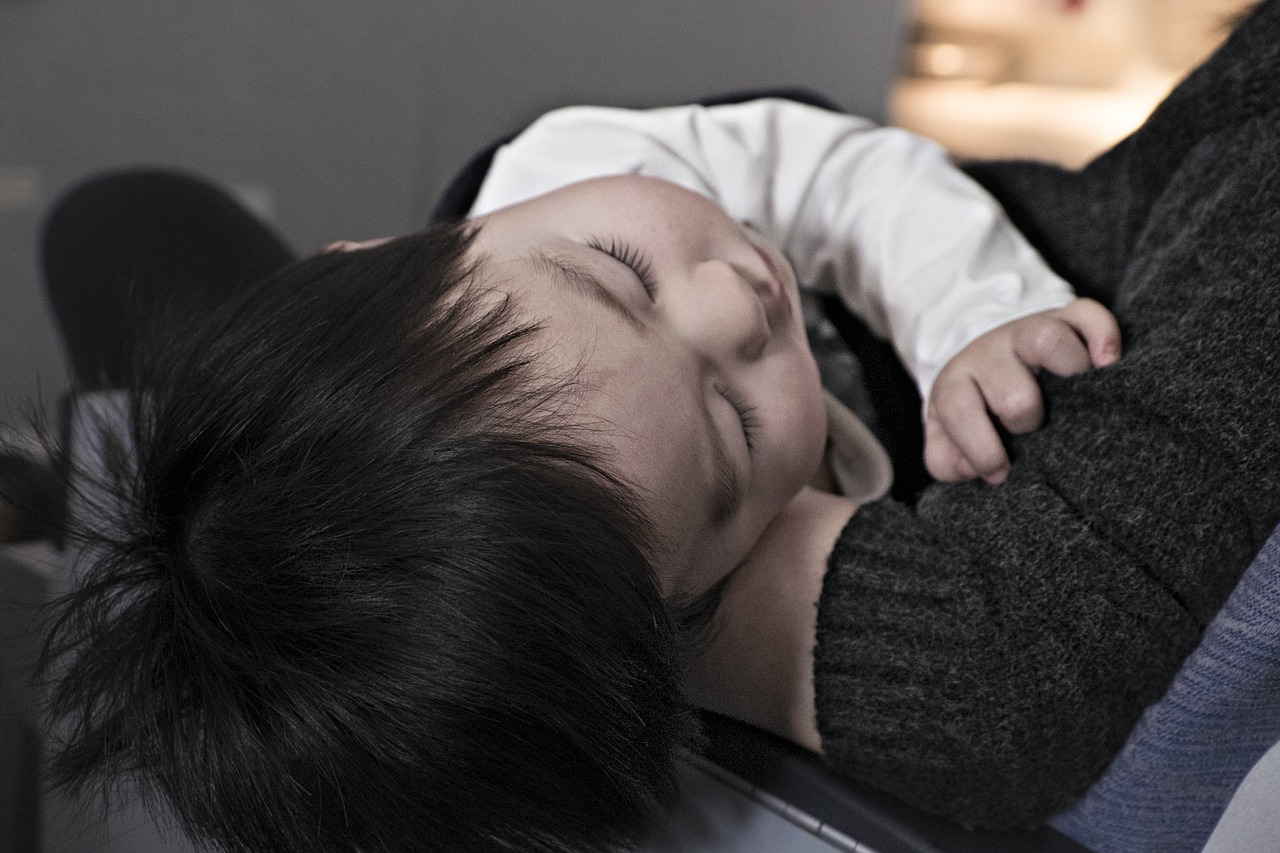We know cold and flu season is right around the bend when the leaves fall and the temperatures drop. But before you start stocking up on tissues, take a minute to review your home. Research shows that your indoor environment can make a big impact on your seasonal influenza risks.
Chapped lips and static shocks are some of the first signs of having dry air indoors. Before long, other health concerns can flare up too. How we feel during the colder months is greatly influenced by our air quality at home. A healthy humidity level can go a long way in keeping your immune system strong.
Low Humidity Effects on Children
Here in Indiana, we usually view humidity as a nuisance. After dealing with high humidity levels in the summer, we often want to be rid of it during the colder months. In reality, having some humidity is healthy in the autumn and winter. It can be really hard for our bodies to feel at their best when indoor humidity levels drop below 40 or 30 percent. Without the right air system in place, these changes can be pretty intense—especially for infants and young children.
All around the world, seasonal changes in humidity tend to impact children more. Because their bodies are less effective at adapting to ambient humidity and other exposures, children are often more susceptible to humidity-related health issues. A recent review of 37 different studies revealed that humidity directly relates to “childhood asthma and other pediatric allergic diseases.” In countries and populations all over the globe, instances of relatively high humidity—and low humidity—both had an impact on children’s health.
It’s easy for kids to have health issues when moisture in the air isn’t quite balanced. One study in Greece showed a 31% increase in childhood asthma-related admissions during a 10% jump in humidity. Interestingly enough, the opposite also seems to be true. In Japan, emergency visits for childhood asthma increased when humidity levels had a rapid decrease. The same thing happened in Western Europe. Over there, children’s asthma symptoms spiked during the lowest monthly average of relative humidity. Not surprisingly, low humidity was also connected to eczema in Taiwanese schoolchildren. Dry skin, scratchy throats, and higher flu risks are all common side effects of low humidity levels.
Other Health Concerns with Dry Air
We’ve long understood that our skin gets irritated when exposed to dry air, but we sometimes forget that this happens indoors, as well as outside. Whenever humidity levels are low, dry air tends to draw out moisture from the nearest source. Typically, this is our bodies. Some people might feel that their eyes are dry or irritated, but it’s often our skin that takes the biggest hit. That’s often why we want to use so much lotion in the colder months. As the dry air pulls water from our skin, we think that using certain products will help our body retain its natural moisture. Of course, the underlying issue is humidity. Dry air also makes our nose and nasal passageways dry. For those already prone to asthma, this can make wintertime a real bummer.
One good thing about low humidity is that dust mites don’t do well in it. Unfortunately, this comes with its own set of problems. While indoor allergens might be lower in low humidity, our risk factor is significantly raised because our mucous membranes become dehydrated. The throat and nasal areas lose their natural barrier to airborne infections, and they’re unable to filter air like they normally do. All this puts us at higher risk for illness. So even if there aren’t lots of dust mites, the ones that are around are more likely to flare up allergies.
A dry upper respiratory tract also makes it more difficult to breathe comfortably. Some people experience nosebleeds in low humidity. Dry indoor air can also disrupt sleep and cause others to start snoring. Again—we tend to think of humidity as a bad thing in the hot and sticky summer months, but in the wintertime, a little humidity is a huge asset. Having some moisture in the air helps us breathe easier and makes it harder for airborne infections to migrate. The other problem with low humidity is that it makes areas feel colder than they really are. Without the moisture in the air, you might even be tempted to crank up the heat even higher—which only exacerbates the problem. You skin will just dry out even more in dry air, making you feel even worse.
Feeling Better with Indoor Humidity
The first step in feeling better in cold autumn days and through winter is to stay hydrated. The dry air outside will continue to affect your skin and respiratory system—even if your air indoors is at the proper humidity level. Drinking plenty of water shouldn’t stop just because the temperature drops. Of course, it’s fine to moisturize if you’re experiencing dry or itchy skin, but maintaining an indoor humidity level of 30 to 40 percent often seems to be the best fix. When your skin feels soft, you’ll be less likely to irritate it by scratching—this is something to watch for in little ones especially.
In order to keep a comfortable home humidity level year-round, a lot of families will opt to install a whole-home humidifier. These units are great because they work with your existing HVAC systems to deliver properly hydrated air throughout your home. That way, your humidity levels won’t fluctuate from room to room, and you can enjoy better sleep—free from dry air—in the colder months. Plus, they only turn on whenever your indoor humidity drops below a set level, so there’s no guess-work
In a lot of ways, these units are a no-brainer. Because they hook right up with your other air systems, you don’t even have to think about replacing parts or refilling reservoirs every day. They can help you breathe better and even give your body’s immune system a natural advantage during the typical “dry air” months. By protecting your respiratory system with the right humidity, you’ll be better able to ward off any illnesses that might be floating around this season—both for yourself and the ones you love.
November 15, 2016

